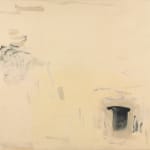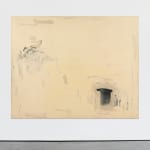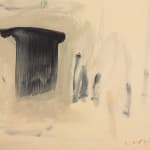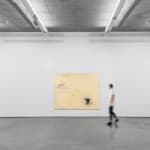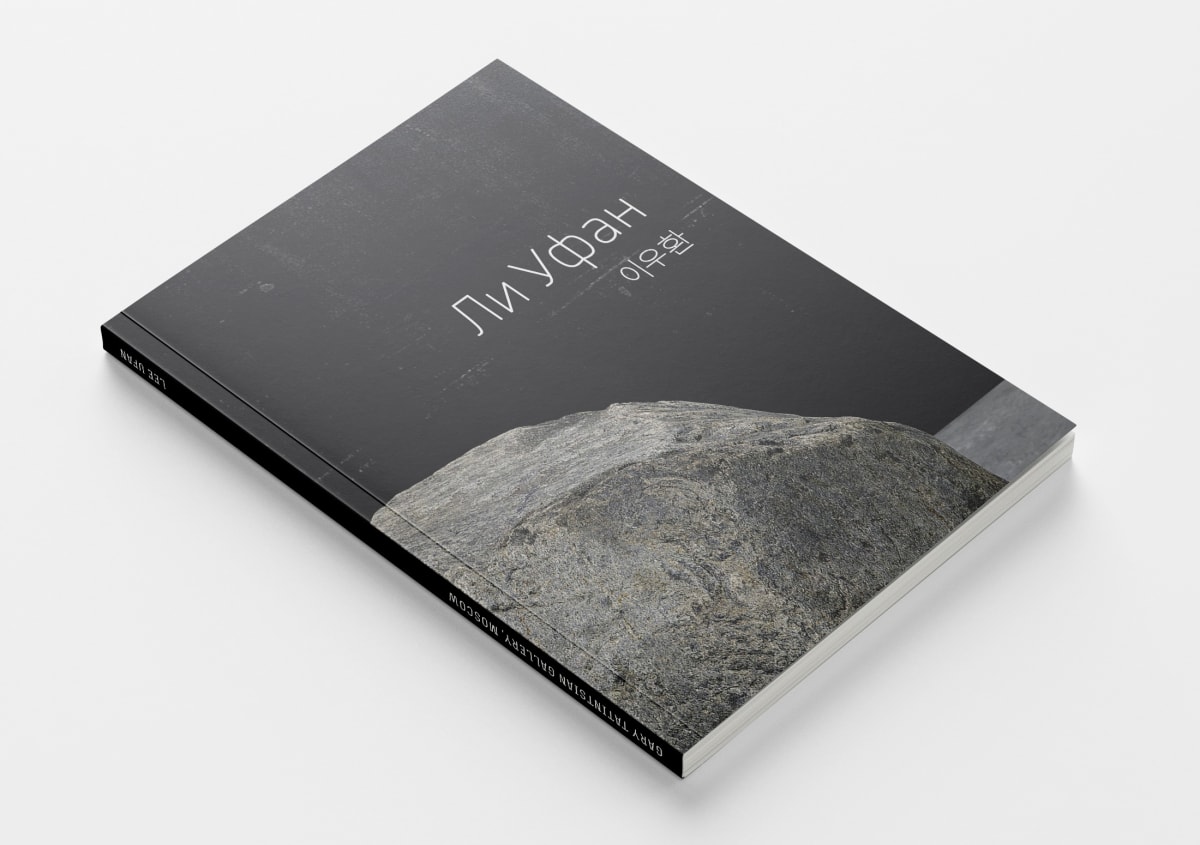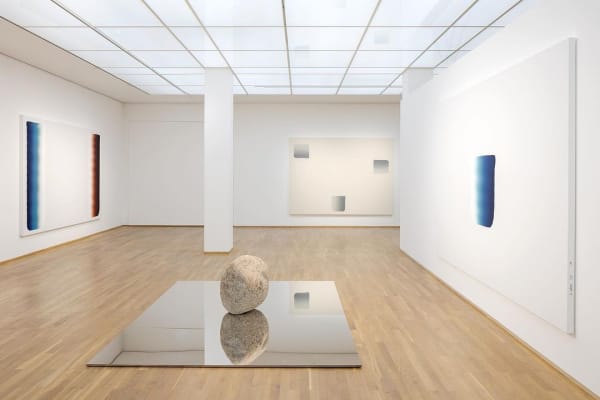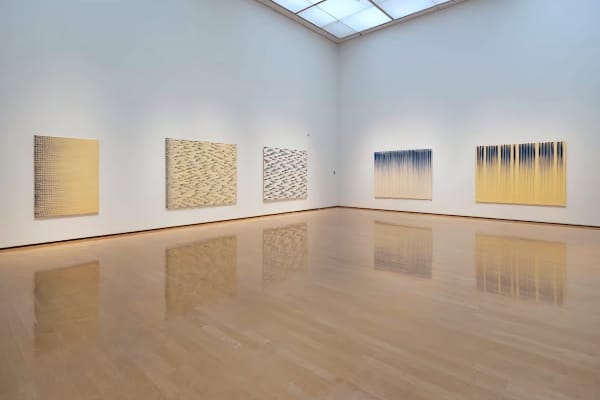Lee Ufan Kyongsangnamdo, Korea, b. 1936
-
 © Gary Tatintsian Gallery
© Gary Tatintsian Gallery -
“If a bell is struck, the sound reverberates into the distance. Similarly, if a point filled with mental energy is painted on canvas; it sends vibrations into the surrounding unpainted space… A work of art is a site where places of making and not making, painting and not painting, are linked so that they reverberate with each other.” – Lee Ufan
Lives and works in Kamakura (Japan) and Paris (France)
DOWNLOAD CV >
Painter, sculptor, writer and philosopher, Lee Ufan came to prominence in the late 1960s as one of the major theoretical and practical proponents of the avant-garde Mono-ha (Object School) group.
Mono-ha was Japan’s first internationally recognized contemporary art movement which rejected Western notions of representation. The artists of Mono-ha focused on the relationships between materials and perceptions rather than expression or intervention, presenting works made of raw physical materials with minimal manipulation.
Lee Ufan’s installations exist in a space that is simultaneously untouched and engaged, always exploring the balance between doing and non-doing. The core of his practice lies in the relationship between painted, unpainted, occupied, and empty spaces. He believes that true expression is not about creating something from nothing but about nudging something that already exists to reveal its vividness in the world.
Since his early Mono-ha period, Lee Ufan has limited his choice of sculptural materials to steel plates and stones, emphasizing their precise conceptual and spatial juxtaposition. The heavy and solid steel plates, commonly used in modern construction, are juxtaposed with natural stones, which “belong to an unknown outer world” beyond artificial shapes and modernity.
“If a heavy stone happens to hit glass, the glass breaks. That happens as a matter of course. But if an artist’s ability to act as a mediator is weak, there will be more to see than a trivial physical accident. Then again, if the breakage conforms too closely to the intention of the artist, the result will be dull. It will also be devoid of interest if the mediation of the artist is haphazard. Something has to come out of the relationship of tension represented by the artist, the glass, the stone. It is only when a fissure results from the cross-permeation of the three elements in this triangular relationship that, for the first time, the glass becomes an object of art.” – Lee Ufan
In his iconic ‘Dialogue’ series, Lee Ufan creates minimalist paintings by placing a single, broad, viscous stroke of paint on canvas, establishing a rhythm that exposes and enlivens the emptiness of space. He restricts his brush strokes to one, two, or three square-like marks on pristine white canvas, creating what he calls “an open site of power in which things and space vividly interact.”
Throughout his over six-decade career, Lee Ufan has been the subject of exhibitions at the most prestigious art institutions such as the Guggenheim Museum in New York, Tate Modern in London, the Royal Museums of Fine Arts of Belgium, Yokohama Museum of Art, Musée d’Art Moderne de Saint-Etienne Métropole in France, Samsung Museum of Modern Art and National Museum of Contemporary Art in Seoul, Kunstmuseum Bonn, and Galerie Nationale du Jeu de Paume in Paris.
Lee Ufan received the Praemium Imperiale for painting in 2001 and the UNESCO Prize in 2000. His work was featured at the Venice Biennale in 2011. In the summer of 2014, Lee Ufan held a major solo exhibition at the Chateau de Versailles in France.
In 2010, the Lee Ufan Museum opened its doors to the public in the city of Naoshima, Japan. The museum building, designed by the architect Tadao Ando, houses paintings and sculptures by Lee spanning a period from the 1970s to the present day.
-
Works
Lee Ufan Kyongsangnamdo, Korea, b. 1936
With Winds, 1990Glue and mineral pigment on canvas181,6 × 227,3 cmFurther images
“When i passively accept external winds, an even greater world is opened.” — Lee Ufan In 1989, Lee Ufan wrote: “How open the world, how suggestive […]! I want to...“When i passively accept external winds, an even greater world is opened.” — Lee Ufan
In 1989, Lee Ufan wrote: “How open the world, how suggestive […]! I want to enlarge and deepen the exchange with the exciting and stimulating outside world instead of soliloquizing and showing obedience to the dictatorship of expression.” This embrace of external forces marked a turning point in his work, leading to a heightened dialogue between presence and absence, gesture and emptiness.
Created at the peak of the With Winds period, this piece embodies the vitality and unpredictability of the series. The brushstrokes shift direction mid-motion, teetering between control and spontaneity. The resulting tension invites viewers to engage with the painting’s metaphorical depth—an extension of Lee Ufan's lifelong philosophical inquiry, which permeates both his art and theoretical writings.
ExhibitionsPublicationsViewing RoomsNews-

Lee Ufan | Quiet Resonance
August 31, 2024 – September 2025 | Art Gallery of New South Wales, SydneyWithin spaces designed by the Lee Ufan, this exhibition distills over six decades of considered experimentation into a series of recent paintings and sculptures created especially for the Art Gallery... -

Lee Ufan | Personal Exhibition at Hamburger Bahnhof
October 27, 2023 – April 28, 2024 | Hamburger Bahnhof, BerlinHamburger Bahnhof presents the first comprehensive retrospective of the painter and sculptor Lee Ufan in Germany. The exhibition includes some of artist’s most significant pieces, including works from his iconic... -

Lee Ufan | Relatum
May 28 – October 27, 2024 | Rijksmuseum gardens, AmsterdamNine works by Lee Ufan from the artist’s Relatum series are represented in the gardens of the Rijksmuseum in Amsterdam, marking the first solo exhibition of the artist in the... -

Lee Ufan | Personal Exhibition at Hyogo Prefectural Museum Of Art
December 13, 2022 – February 12, 2023 | Hyogo Prefectural Museum Of Art, KobeThe major retrospective exhibition assembles Lee Ufan most important works, including everything from his earliest pre-Mono-ha pieces, which considered the problem of vision, the Relatum series, which changed the concept... -

Lee Ufan | 15th Anniversary of the National Art Center
August 10 – November 7, 2022 | The National Art Center, TokyoThe exhibition assembles Lee Ufan most important works, including everything from his earliest pre-Mono-ha pieces, which considered the problem of vision, the Relatum series, which changed the concept of sculpture,...
Video





